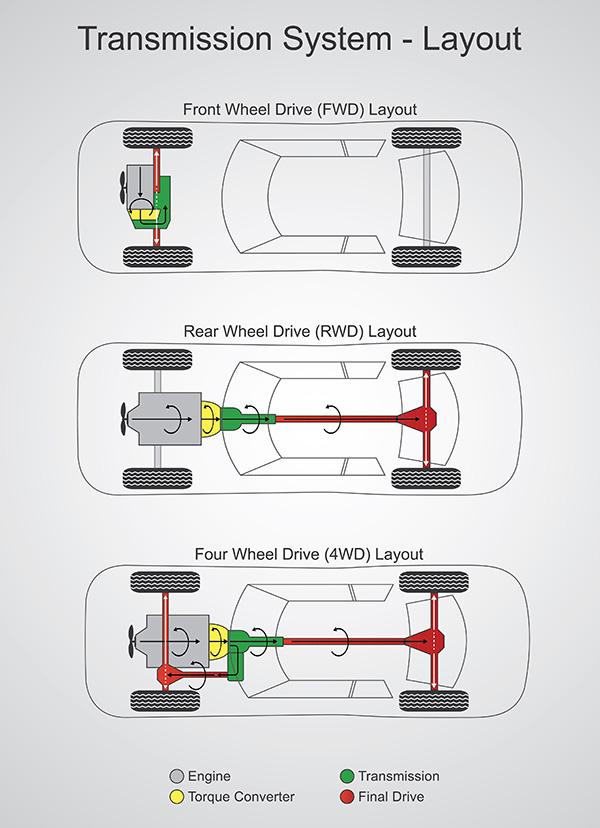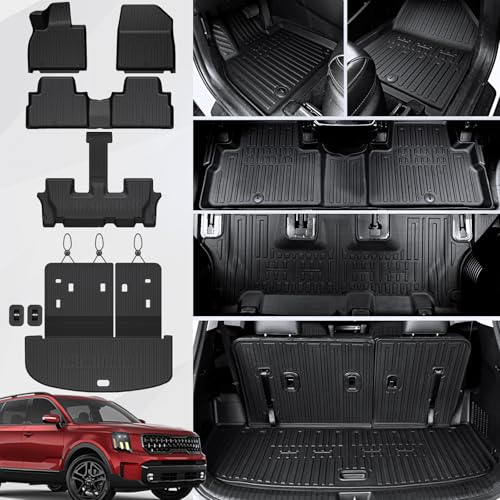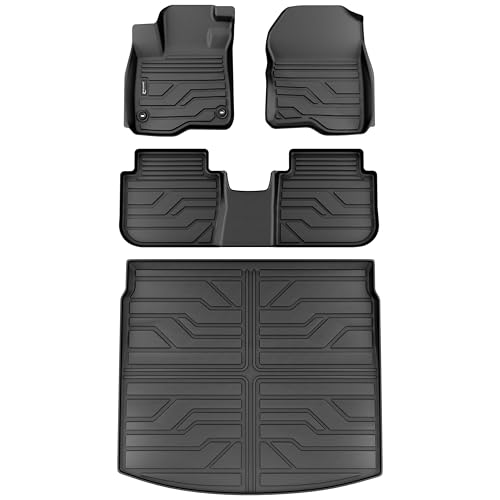When you’re shopping for a new vehicle, the alphabet soup of acronyms on the window sticker—FWD, RWD, AWD—can be confusing. You know they’re important, but what do they actually mean for your daily commute, your fuel budget, or your safety during a surprise snowstorm? Understanding these letters is the key to choosing a car that perfectly fits your life.
Front-Wheel Drive (FWD) means the car’s engine power is sent exclusively to the front wheels, which both pull the vehicle forward and steer it. The rear wheels simply follow along. This is the most common drivetrain found in passenger cars today, and for very good reason.
This guide breaks down exactly what FWD means for a car, from the clever engineering that gives you more legroom to the real-world pros and cons you’ll experience on the road. Leveraging extensive analysis of vehicle data and design principles, we’ll unpack why this setup has become the industry standard and help you decide if it’s the right choice for your next vehicle.
Key Facts
- The Dominant Design: Front-Wheel Drive (FWD) is the most common drivetrain configuration used in modern passenger cars, including the vast majority of sedans, compacts, and many SUVs.
- Superior Fuel Efficiency: FWD systems are generally more fuel-efficient because they are lighter and have fewer moving parts than other drivetrains, resulting in less power loss between the engine and the wheels.
- More Cabin Space: Most FWD cars use a transverse (sideways) engine layout, a compact design that eliminates the need for a large transmission tunnel, resulting in a flatter floor and significantly more interior room for passengers.
- Better Foul-Weather Traction: In rain and snow, FWD cars typically have better traction than their Rear-Wheel Drive (RWD) counterparts because the weight of the engine is positioned directly over the drive wheels, pressing them onto the road.
- A Proven History: While early experiments with FWD date back centuries, the modern, space-saving layout was popularized by iconic vehicles like the 1959 Mini and refined in cars like the Fiat 128, setting the standard for today’s vehicles.
What is FWD (Front-Wheel Drive) and How Does It Work?
Front-Wheel Drive (FWD) means the car’s engine power is sent exclusively to the front wheels, which both pull the vehicle forward and steer it. The rear wheels simply follow along. This efficient and compact design has become the standard for most passenger vehicles on the road today.

Think of it like pulling a wagon from the front (FWD) versus pushing it from behind (RWD). The front wheels do all the work of both pulling and steering. This integrated approach simplifies the mechanics of the car and offers several practical benefits. The process of getting power to the road is straightforward:
- Engine Power: The engine, located at the front of the car, generates power.
- Transaxle: This power is sent to a component called a transaxle. In an FWD car, the transaxle is a clever piece of engineering that combines the transmission and the axle into a single, compact unit.
- Front Wheels Pull: The transaxle then delivers the power directly to the two front wheels, causing them to spin and pull the car forward.
This fundamental design was popularized by innovative cars like the 1959 Mini, which used the FWD layout to maximize interior space in a very small car, a principle that continues to influence car design to this day.

The Transverse Engine Layout: A Space-Saving Revolution
Most FWD cars use a transverse (sideways) engine, a compact design that eliminates the need for a large transmission tunnel, resulting in significantly more interior cabin space. This engineering choice is one of the biggest reasons FWD became so popular. Instead of being mounted longitudinally (front-to-back), the engine is turned 90 degrees to sit “east-west” across the engine bay.
This brilliant layout, refined by engineers like Dante Giacosa in the groundbreaking Fiat 128, has several direct benefits for the driver and passengers:
- More interior space: With no bulky driveshaft running to the back of the car, designers can create a more open and spacious cabin.
- Flatter floor: The absence of a transmission tunnel means the floor of the car can be flatter, especially benefiting the middle passenger in the rear seat.
- More legroom: The compact arrangement at the front of the vehicle allows for a roomier front footwell area.
Quick Fact: The next time you’re in a smaller car with a surprisingly roomy front cabin, you’re likely experiencing the benefit of this clever FWD design.
The Pros: Why Are Most Cars FWD?
FWD is the most common drivetrain because it offers a practical balance of benefits for daily driving, including better fuel economy, lower manufacturing costs, more interior space, and superior traction in snow and rain. For the average driver, this combination makes FWD an incredibly sensible and economical choice. With rising fuel prices, is it any wonder that the efficiency of FWD has become a deciding factor for millions of drivers?
Here are the key advantages that explain why automakers and consumers overwhelmingly choose FWD:
- Better Fuel Economy: FWD systems are mechanically simpler and lighter than RWD or AWD systems. With fewer parts (like a long driveshaft and rear differential), there’s less weight to move and less power lost on the way to the wheels. This translates directly into more miles per gallon.
Because the engine, transmission, and drive wheels are all bundled together at the front, the FWD system is a highly efficient package that saves you money at the pump.
- Increased Interior Space: As mentioned, the transverse engine layout is a game-changer for interior design. By eliminating the transmission tunnel that runs through the cabin in RWD cars, FWD vehicles offer more legroom and a more comfortable experience for passengers.
- Lower Purchase and Maintenance Costs: Simpler mechanics mean FWD cars are generally less expensive to design, manufacture, and assemble. This cost saving is passed on to the consumer, making FWD vehicles more affordable. Over the life of the car, maintenance can also be less costly due to fewer complex drivetrain components.
- Excellent Traction in Bad Weather: This is a major safety and confidence advantage. The weight of the engine and transaxle is located directly over the front drive wheels. This downward pressure helps the tires grip the road better in slippery conditions like rain and snow, reducing the likelihood of wheelspin when starting from a stop.
- Predictable and Safe Handling: FWD cars have a natural tendency to understeer. This means that if you enter a corner too fast, the front of the car will tend to push wide in a gradual, predictable way. For most drivers, this is a much safer and easier-to-control reaction than oversteer (where the rear of the car slides out), which is more common in RWD vehicles.

The Cons: What Are the Limitations of FWD?
The main disadvantages of FWD include limited performance under hard acceleration, the potential for torque steer in powerful cars, a tendency to understeer in aggressive cornering, and lower towing capacities compared to RWD or 4WD vehicles. While FWD is a brilliant solution for daily driving, these trade-offs become apparent in more demanding situations.
Here’s a closer look at the limitations of a front-wheel drive system:
- Torque Steer: In FWD cars with powerful engines, accelerating hard can sometimes cause the steering wheel to tug to one side. This is called torque steer. It happens because the drive shafts connecting the transaxle to the front wheels are often unequal lengths, causing a slight imbalance in power delivery under heavy throttle.
- Handling Limits and Understeer: The front tires on an FWD car have to do two jobs at once: steer the car and put power to the ground. This puts a lot of demand on them. During aggressive cornering, this dual role can overwhelm the available grip, causing the car to push wide (understeer) instead of turning as sharply as desired.
- Reduced Acceleration Grip: When a car accelerates, its weight naturally shifts toward the rear. In an FWD car, this lifts weight off the front drive wheels, reducing their grip. This is why high-performance sports cars are almost always RWD—they can use that weight transfer to their advantage for better traction off the line.
- Lower Towing Capacity: RWD and 4WD vehicles are better suited for towing heavy loads. The FWD layout is not optimized for handling the stress and weight distribution challenges that come with pulling a heavy trailer.
- Increased Component Wear: Because the front wheels handle both steering and power delivery, components like the tires and Constant Velocity (CV) joints can experience more wear and tear over time compared to the components in a RWD system.
Pro Tip: For most drivers, the ‘safer’ tendency of FWD cars to understeer is a benefit. However, performance enthusiasts often prefer the opposite behavior, known as oversteer.
FWD vs. RWD vs. AWD: A Quick Comparison
FWD excels in fuel economy and everyday traction, RWD is preferred for performance driving, and AWD offers the best all-weather safety and traction at a higher cost. Understanding the core differences helps you see where FWD fits into the larger picture of vehicle drivetrains. Each system is designed to meet a different set of priorities.
Looking at this table, which column best matches your typical driving needs and climate?
| Drivetrain | How it Works | Best For | Key Pro | Key Con |
|---|---|---|---|---|
| FWD | Power to front wheels | Daily driving, snow/rain | Fuel Economy | Performance Limits |
| RWD | Power to rear wheels | Performance driving | Handling Balance | Poor Snow Traction |
| AWD | Power to all wheels | All-weather safety | All-around Traction | Higher Cost & Lower MPG |
Which Drivetrain is Right for You?
Choose FWD for the best balance of fuel efficiency and cost for daily commuting. Choose RWD for performance driving. Choose AWD for the ultimate in all-weather safety and traction. The right choice ultimately depends on your personal priorities, where you live, and how you drive.
For the Daily Commuter
For the vast majority of people who use their car for commuting, running errands, and family trips, FWD is the ideal choice.
* Recommendation: Front-Wheel Drive (FWD)
* Why: It provides the best combination of fuel efficiency, a low purchase price, and ample interior space. Its predictable handling and good traction in rain and light snow are more than sufficient for typical road conditions.
For the Performance Enthusiast
If you prioritize a dynamic driving experience, balanced handling, and the thrill of acceleration, RWD is the traditional choice.
* Recommendation: Rear-Wheel Drive (RWD)
* Why: RWD offers superior handling balance because the front wheels only have to steer while the rear wheels only have to provide power. This separation of tasks allows for better performance in aggressive driving and is the standard for sports and luxury cars.
For the Driver in Snowy Climates
If you live in an area with heavy snowfall, frequent ice, or you simply want the maximum possible traction and safety in all conditions, AWD is worth the investment.
* Recommendation: All-Wheel Drive (AWD)
* Why: AWD sends power to all four wheels, providing superior grip for accelerating in slippery conditions. It offers the highest level of confidence and safety for drivers who regularly face challenging weather.
To keep your FWD vehicle performing its best, especially in varied weather, equipping it with high-quality accessories can make a significant difference.
FAQs About Car Drivetrains
Is it better to drive in FWD or AWD?
AWD provides superior traction in all conditions, making it technically better, especially in heavy snow. However, FWD is very capable in light snow and rain, and offers better fuel economy and a lower purchase price, making it a better value for many drivers. For most people who don’t face extreme winter weather, a FWD car with a good set of all-season or winter tires is perfectly adequate and more economical.
What are the main negatives of FWD?
The main negatives of FWD are primarily related to high-performance driving. The key drawbacks include:
* Reduced traction during hard acceleration as weight shifts to the rear.
* The potential for torque steer (pulling the steering wheel to one side) in powerful cars.
* A tendency to understeer (push wide) in sharp, aggressive turns.
* Lower towing capacities compared to RWD or 4WD vehicles.
Does FWD mean a car is automatic?
No, FWD does not mean a car is automatic. FWD refers to which wheels receive engine power (the front ones), while “automatic” refers to the type of transmission that shifts gears without driver input. A FWD car can have either an automatic or a manual transmission. The drivetrain and the transmission are two separate systems in a vehicle.
Are FWD cars good for daily driving?
Yes, FWD cars are excellent for daily driving. Their combination of strong fuel economy, predictable handling, good traction in rain and snow, and lower purchase and maintenance costs makes them the most practical and efficient choice for most commuters. The benefits of FWD are perfectly aligned with the demands of everyday driving.
Final Summary: FWD is the Smart Choice for Most Drivers
Understanding what FWD means for a car is simple: it’s a practical, efficient, and space-saving design that powers the front wheels. This layout has rightfully become the standard for most vehicles because it delivers a winning combination of benefits that matter most to the everyday driver. From saving money at the gas pump to providing confident handling in a rainstorm, FWD is engineered for the realities of modern driving.
While it may not be the choice for high-performance track days or heavy-duty towing, its strengths are undeniable for commuting, family transport, and all-around utility.
- Efficiency is Key: FWD offers superior fuel economy and a lower cost of ownership.
- Space and Comfort: The design allows for a roomier and more comfortable cabin.
- All-Weather Confidence: It provides reliable and safe traction in most weather conditions.
- Predictable Handling: FWD is inherently stable and easy for the average person to drive safely.
Now that you understand what FWD means, take a look at your own driving habits and decide if this efficient setup is the right fit for your next car.
Last update on 2025-10-09 / Affiliate links / Images from Amazon Product Advertising API













